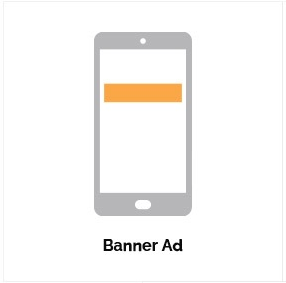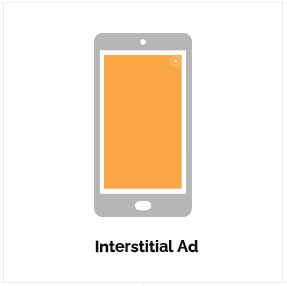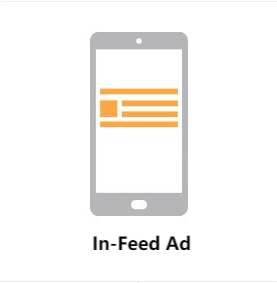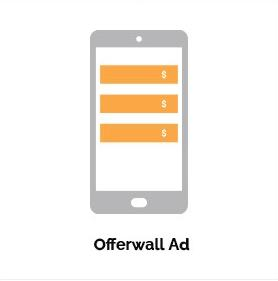-
App Open Ads
-
Banner Ads
-
Interstitial Ads
-
In-Feed Ads
-
Rewarded Ads
-
Pre-Roll Ads
1. App Open Ads

source: pangleglobal
App open ads are also known as splash ads. As the name implies, it appears when the app starts loading and displays the ad content for a fixed period of time (usually 5 seconds). After the display is finished or after the user taps to skip, the ad closes and enters the main page of the app. As the entrance to the carrier app, the app open ad has the characteristics of large size (full screen) and impactful picture. Based on this, the ad visibility of the app open ad is high and the effect is good. The content displayed in the ads can be static images, animations, or Flash effects.
Pros:
- Leverage resources to present ads while waiting for the app to load
- As the first thing users see when they open the app, it can better stimulate their memory
Cons:
- Some Flash installers are slow to load, which affects user experience
- Users who don't want to see ads always need to skip them manually, which may cause users resentment
2. Banner Ads
source: consoliads
Banner ads are the earliest form of online advertising and the most common form of advertising. The advertisement content is mostly in the form of text, images, or rich media, and appears at the top or bottom of the interface inside the app. The size of banner ads is small and the position is biased, so they are usually difficult to attract users' attention, and their visibility and advertising effect are not ideal.
Pros:
- Available on all screens
- Cheap prices for deployment
- Relatively simple and fast material creation
Cons:
- Limited display content
- Causes a certain amount of obscuration, affecting the user experience
P.S. Some people think banner ads are unobtrusive, but personally, I think it usually lines up very abruptly and destroys the coordination of the whole picture
3. Interstitial Ads
source: consoliads
Interstitial ads are triggered ads, which pop up the ad content after the user makes the corresponding operation (such as open, pause, pass, jump, exit). The ads are mainly in the form of pictures, animations and videos, mostly half-screen or full-screen ads. Common examples are the advertising pop-ups that appear on the screen when you click the pause button while watching online videos. It is worth mentioning that to some extent, app open ads can also be categorized as interstitial ads.
Interstitial ads have a high degree of exposure and can attract users' attention. However, because of interrupting users' normal operation of using the app, it is easy to cause users to resent and turn off the ads immediately. Therefore, make good use of the break time of the game for reasonable advertisement insertion. For example, insert after the end of a level in level-type games.
Pros:
- Strong visual impact, often with significant advertising impact
- Enough space to display detailed advertising content
- Can be made into interactive ads
Cons:
- It will temporarily interrupt the user's operation behavior and affect the user experience
4. In-Feed Ads
source: consoliads
In-Feed ads are a very popular form of advertisement, which appears in content-oriented apps. The content of the advertisement is integrated with the general content of the app (such as information, friends' news, and videos) in form. Due to the strong native nature, In-Feed Ads can maximize the protection of user experience and also form secondary dissemination, and the advertising effect may be better than most ad types.
Pros:
- Consistent, doesn't break the user experience
- The form of advertising material varies depending on the app in which it is placed, and takes various forms
Cons:
- Users may be unhappy if they don't realize it's an ad and tap in by mistake
- If the interaction is not designed properly and is very different from the general content of the app, it will behave like a banner ad
5. Rewarded Ads
source: consoliads
- Viewing ads comes from the user's own will and is the least offensive type of advertising
Cons:
- If the app recommended for download is of poor quality or even malware, it will in turn have a negative impact on the ad carrier app
6. Pre-Roll Ads
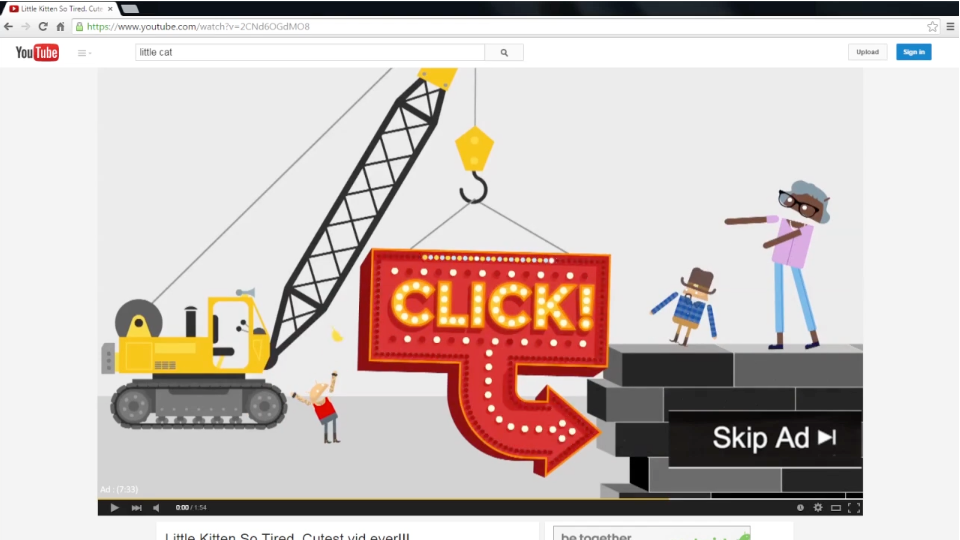
source: YouTube
Pre-roll ads embed advertising content within a video. Usually, the ad is a horizontal video ad ranging from 5s to 60s, which is added to the position before the online video. Some common examples are the ads that are played before the videos on YouTube. Pre-roll ads follow the PC era ad space design, and the overall ad effectiveness is affected by the video quality and relevance of the video. For skippable video ads, advertisers need to create ads that are eye-catching enough to get the user's attention at the beginning and entice them to watch.
Pros:
- Placement of ads in an embedded format without adding additional content panels
- Easy to increase brand exposure
Cons:
- If it cannot be skipped, the user's long viewing time will affect their experience
Native Ads
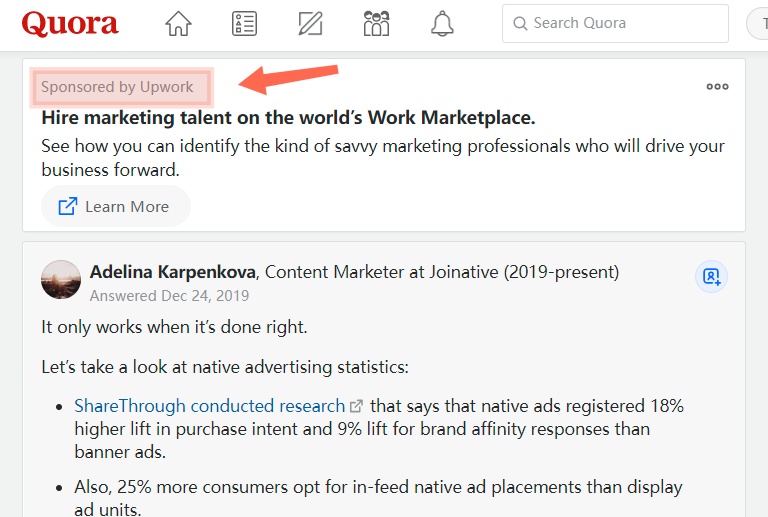
source: Quora
Native ads are a specific type of advertising that enhances user experience by publishing relevant content in the information stream. It is a customized form of advertising that combines platform features, user visual experience, contextual environment and other considerations. Simply put, native ads are ads that are integrated with the website or app itself, and they become part of the website or app content. Therefore, the advantage of native ads is that they can be inserted without disrupting the user experience.
The emergence of native ads is very common today, and the forms are very diverse. By definition, in-feed ads are also a type of native advertising. For example, on Facebook, they run native ads in the form of "dynamic sponsorship" or "suggested posts". In addition, native ads can be seen on Twitter, YouTube, Pinterest, Instagram, Quora, and other platforms. Depending on the nature of the platform, native ads can be in the form of text, images or videos.
As a global mobile ad intelligence and analysis platform, AppGrowing provides various types of advertising monitoring services. Sign Up for Free Trial!
source: AppGrowing
The above content is the introduction of the main broad types in mobile advertising. Understanding mobile advertising fundamentals is the first step in crafting ad creatives. AppGrowing will continue to share some of the techniques to create amazing ad creatives for some time to come. Welcome to keep following Our Blog!
